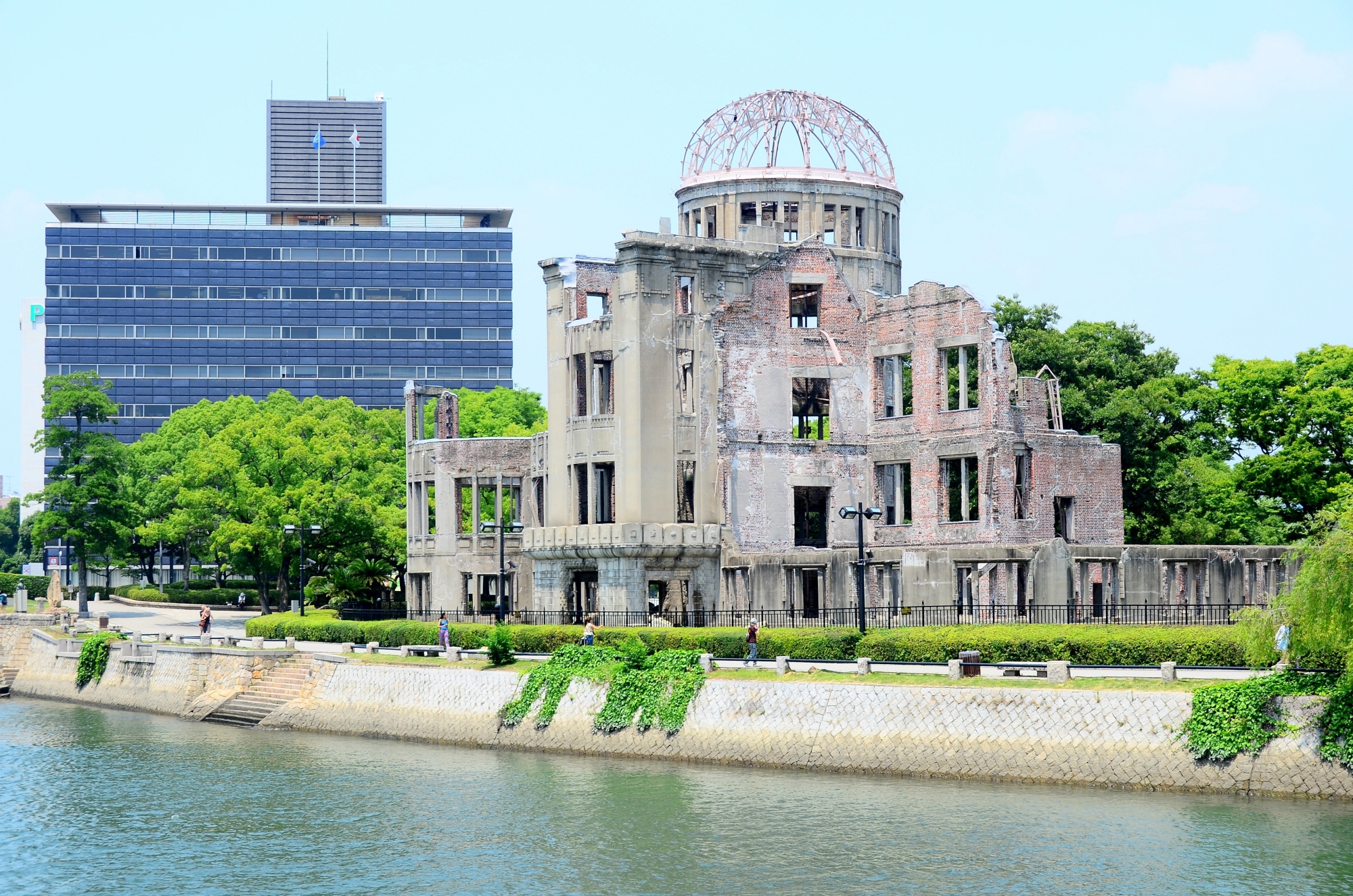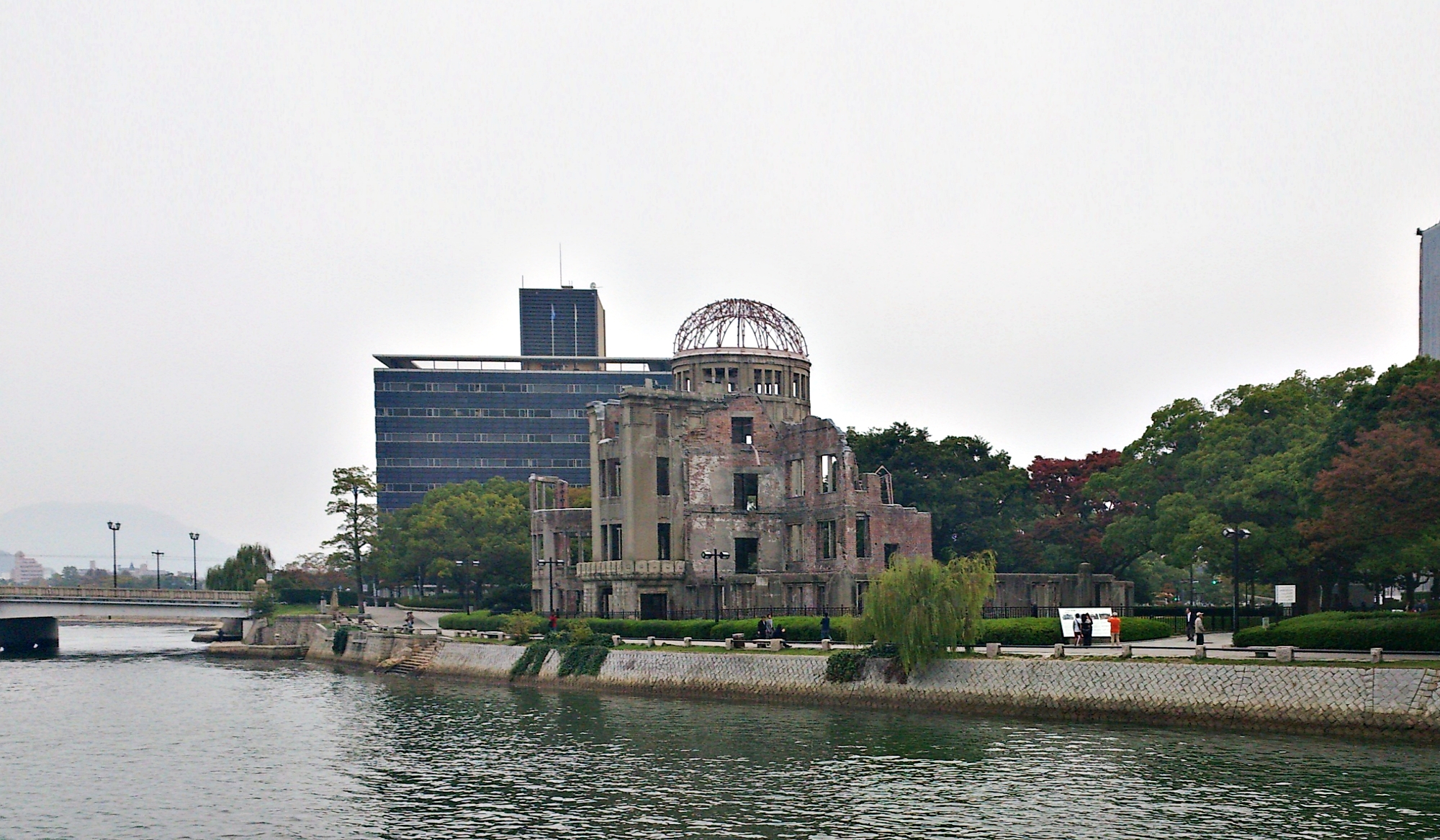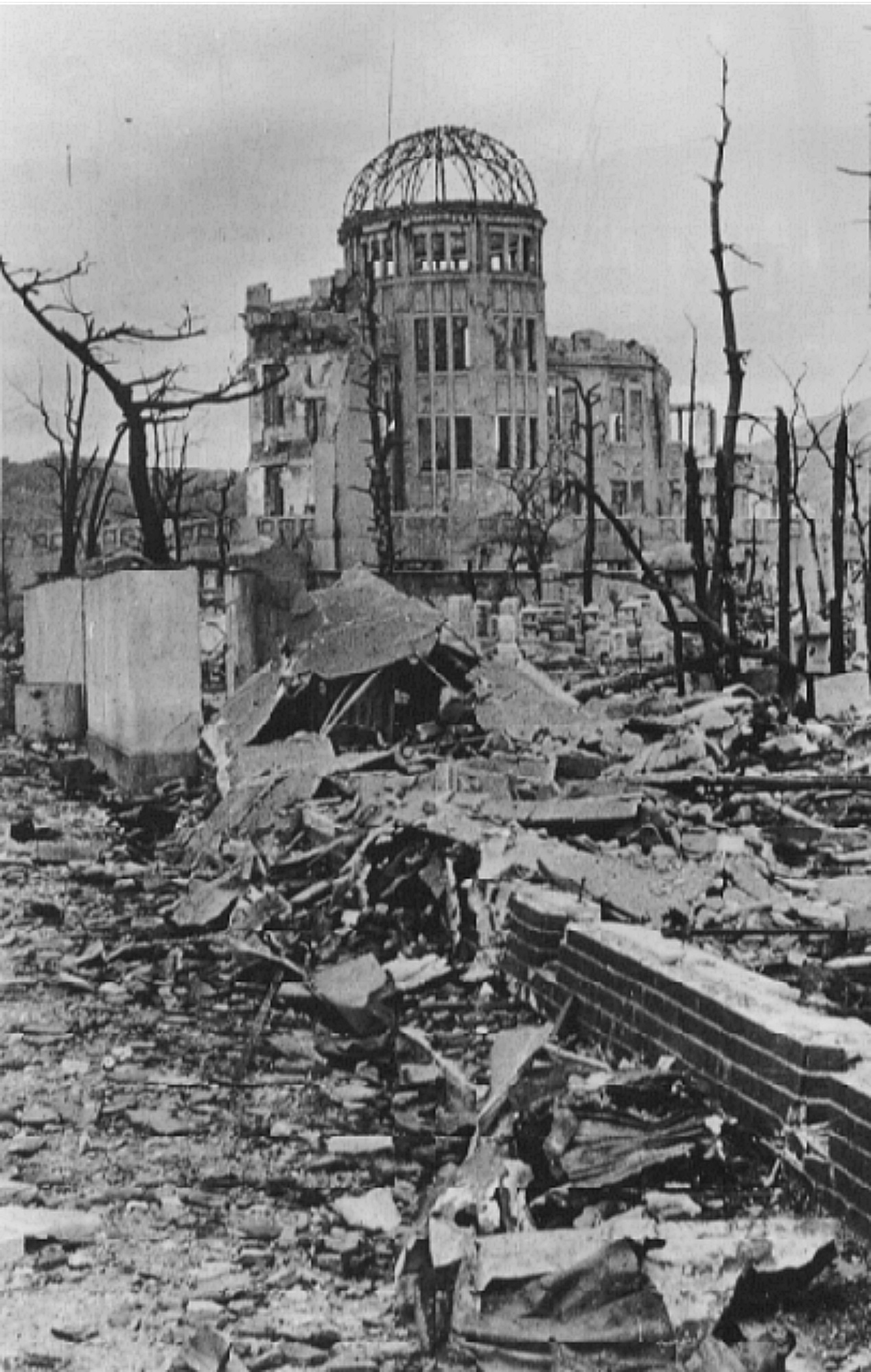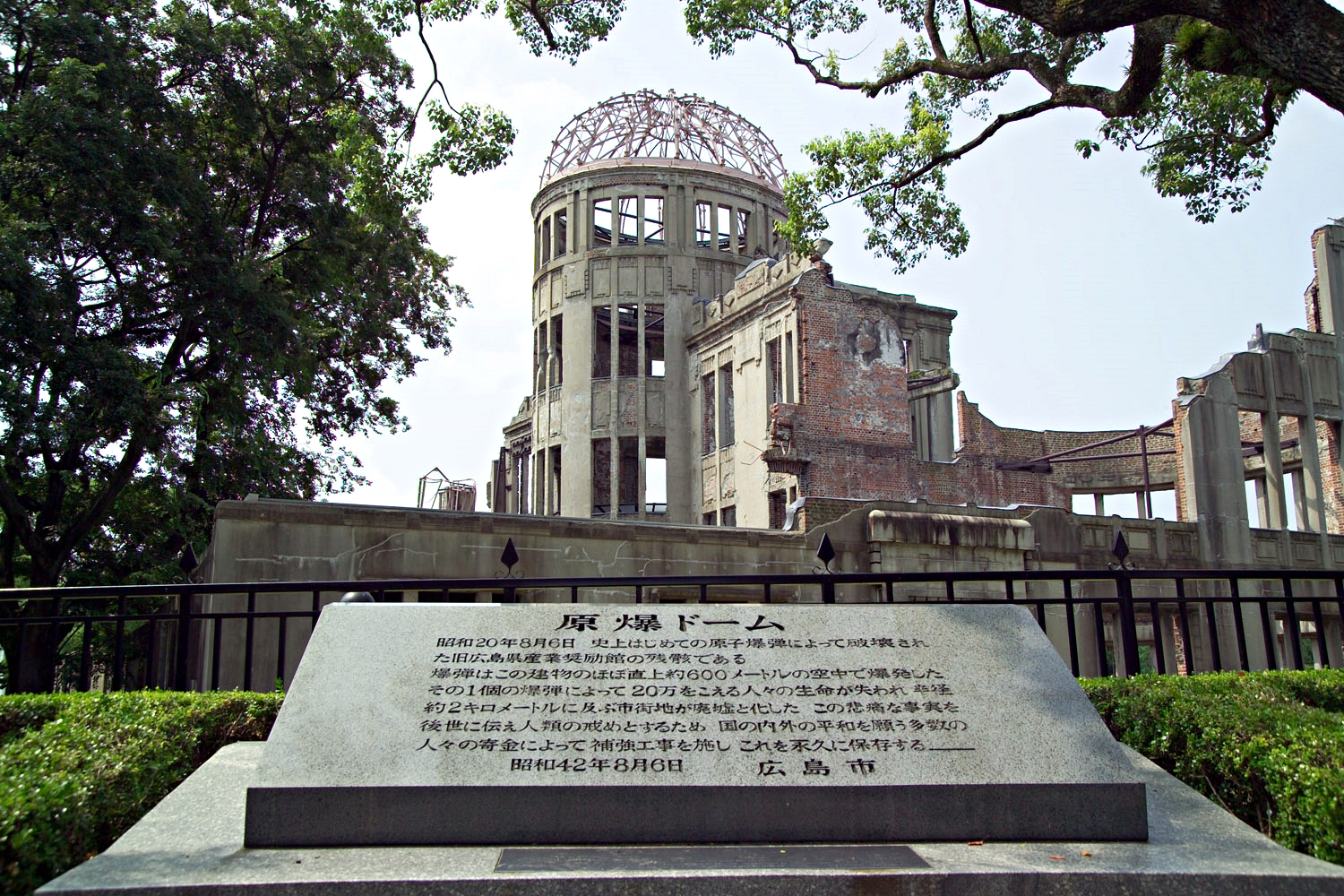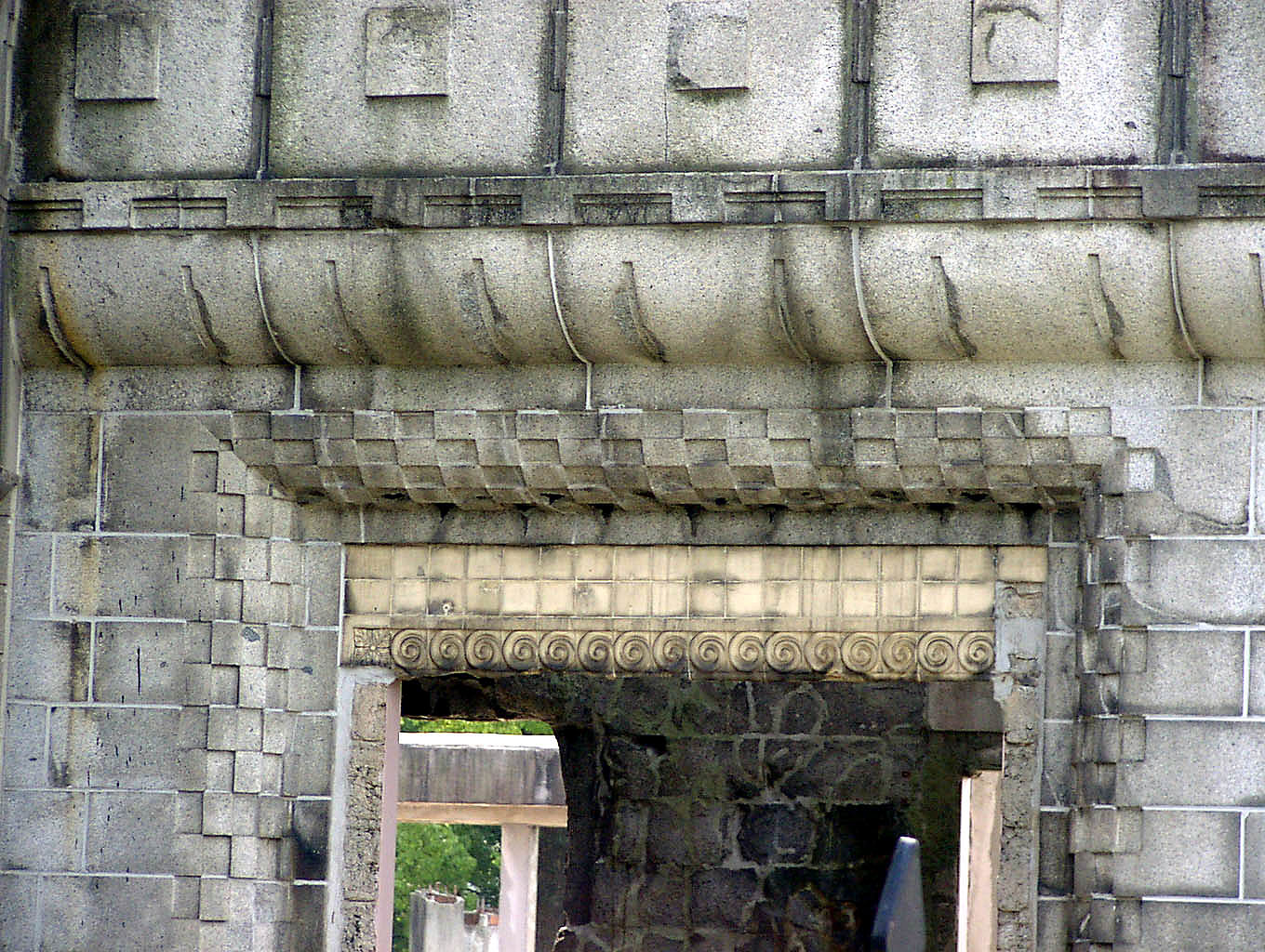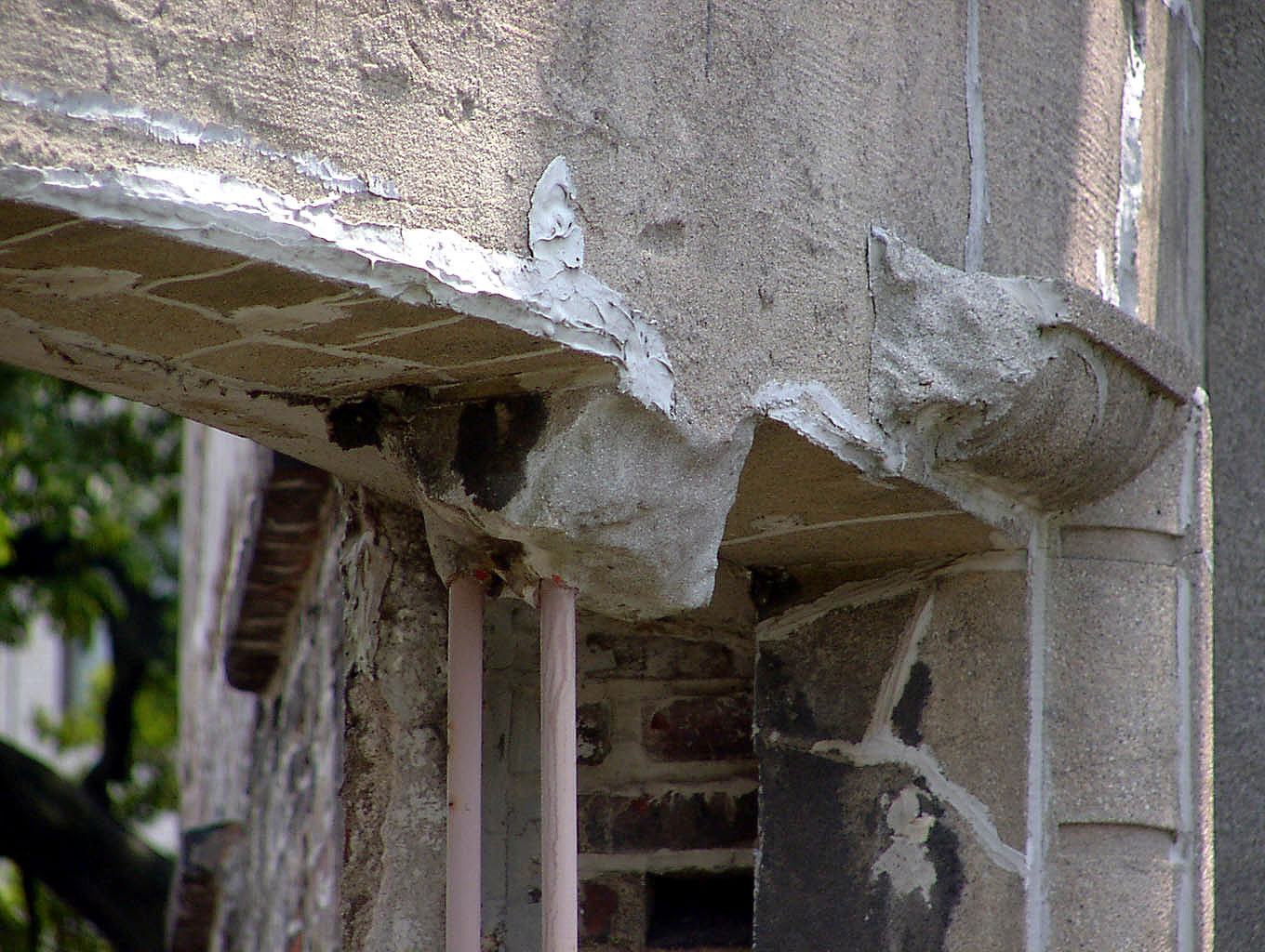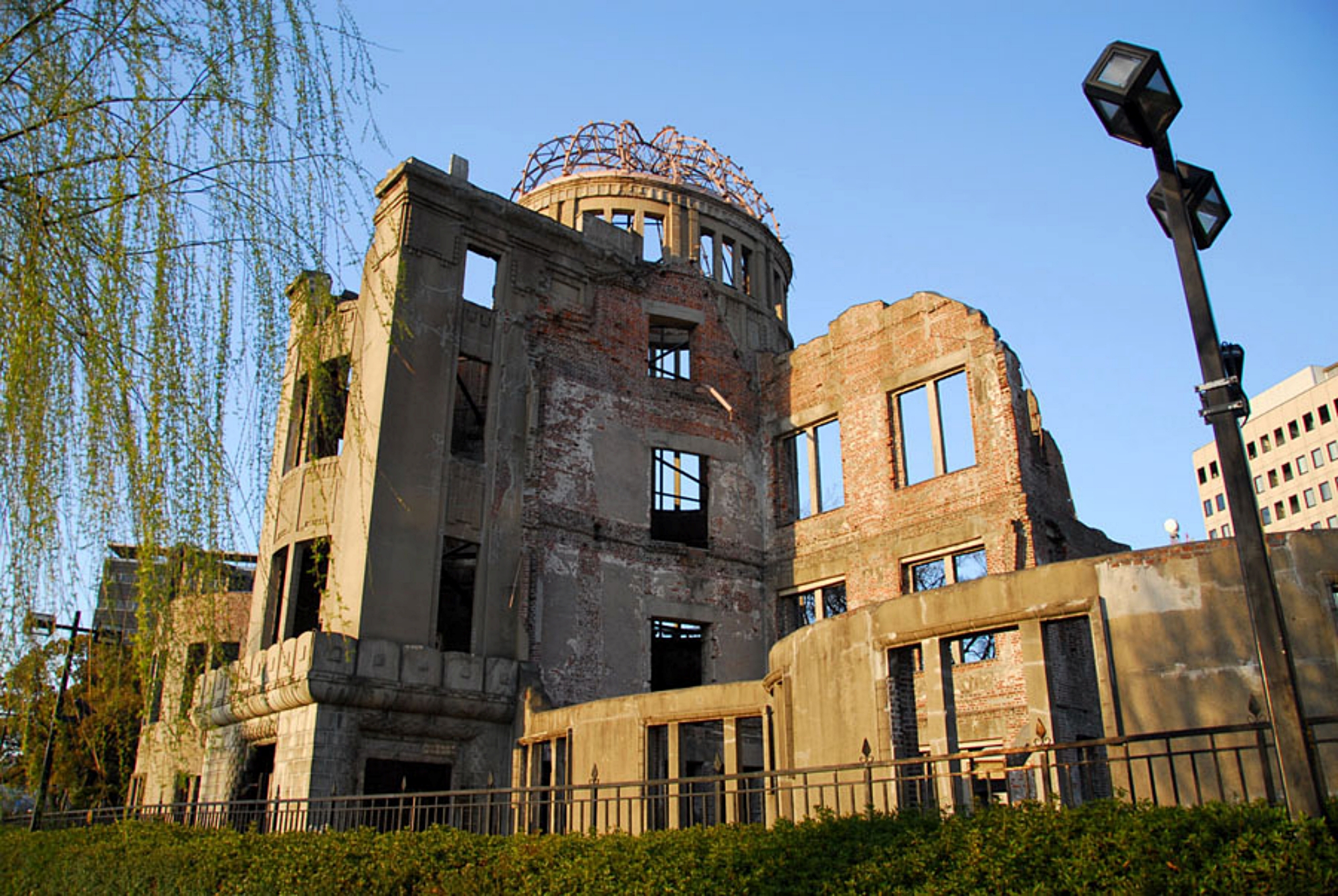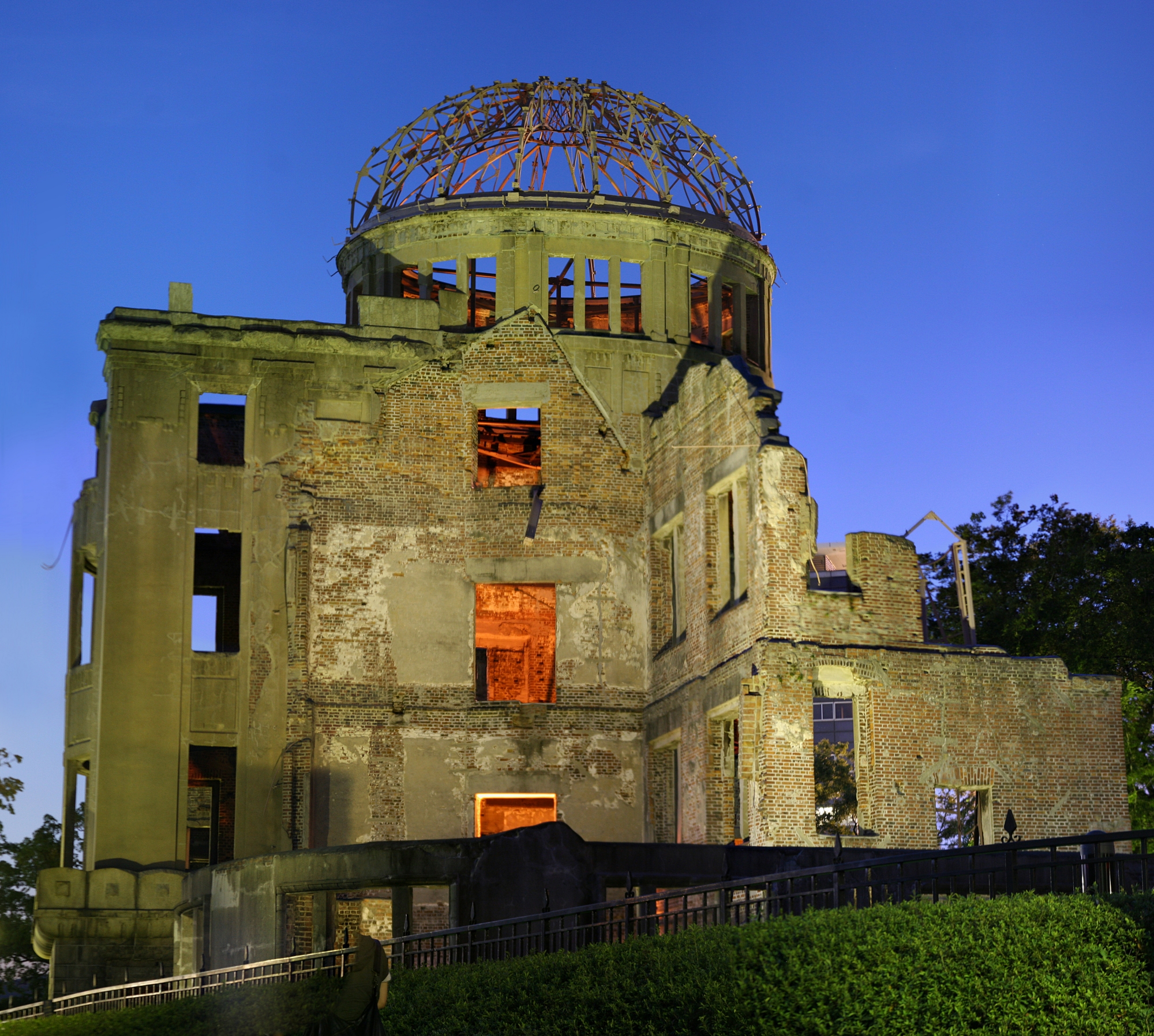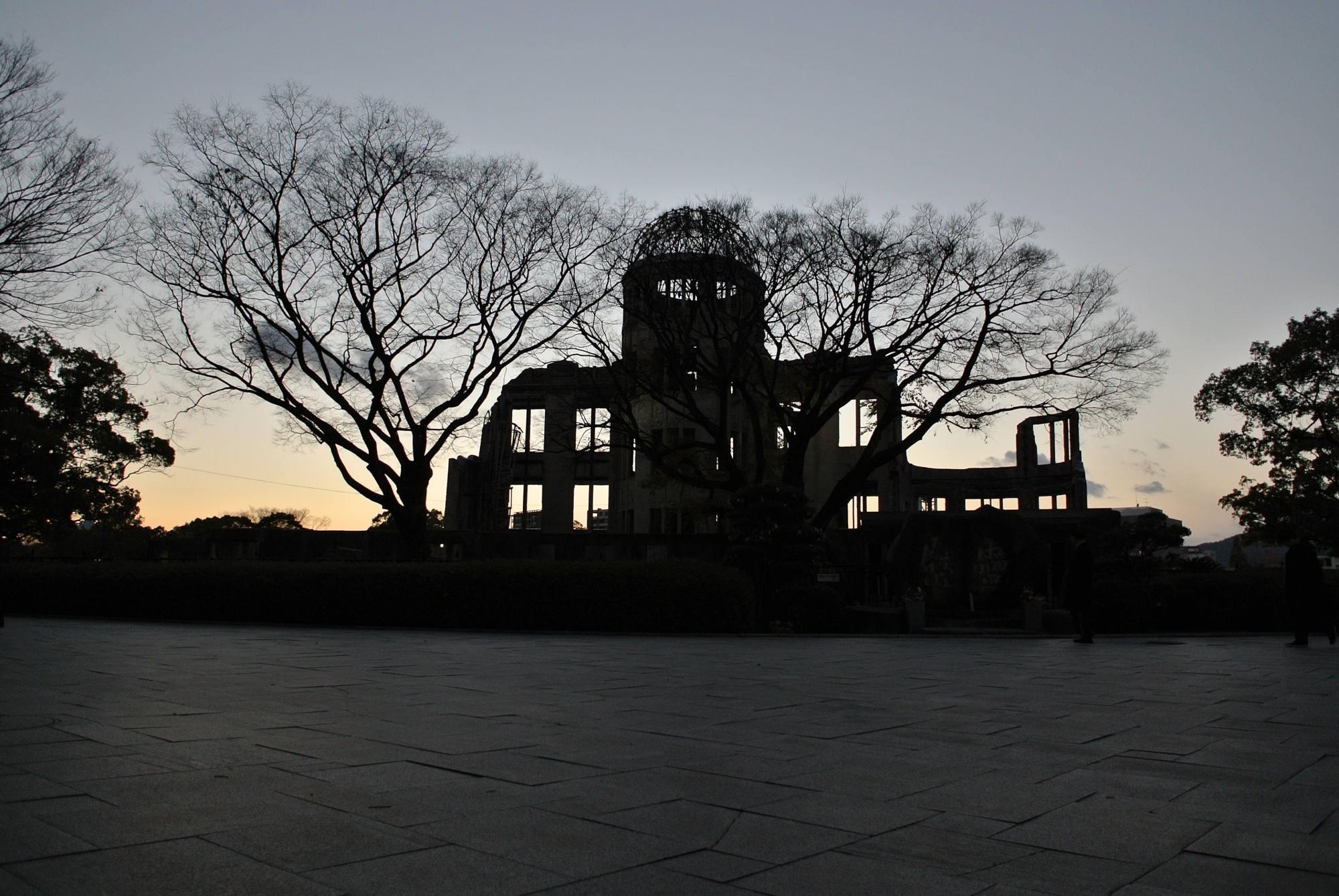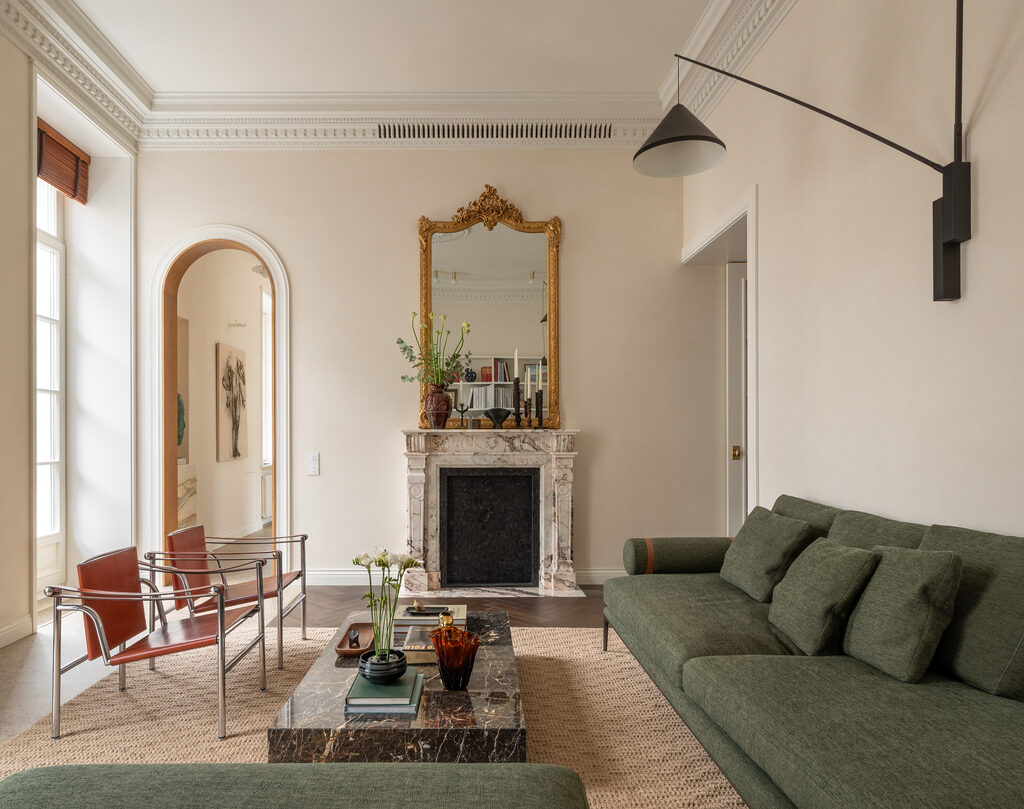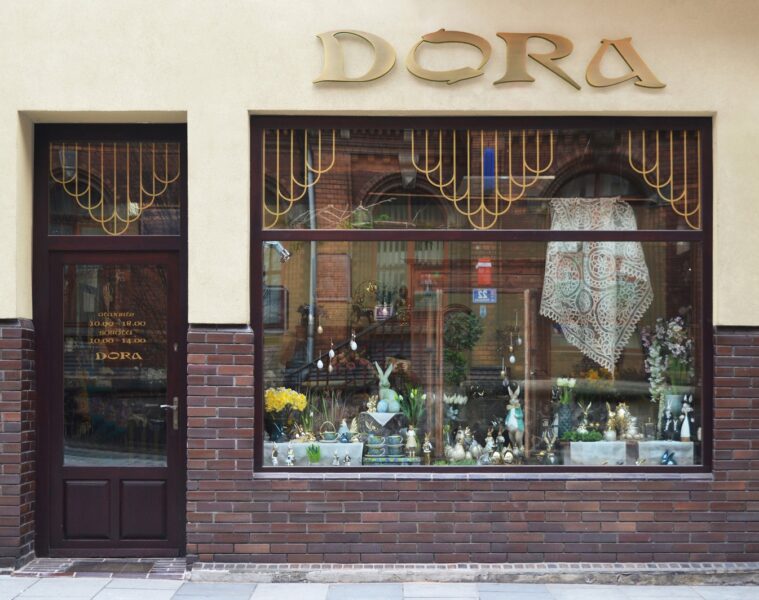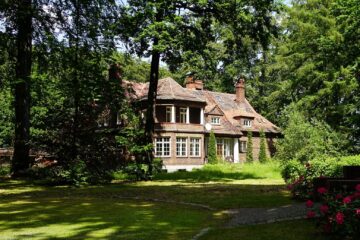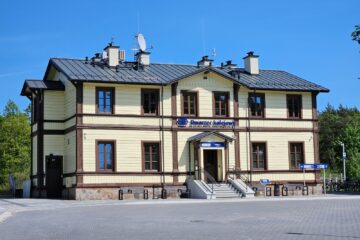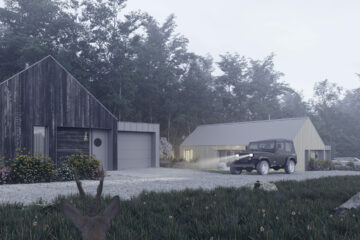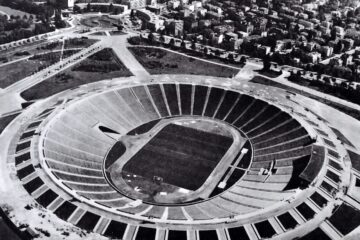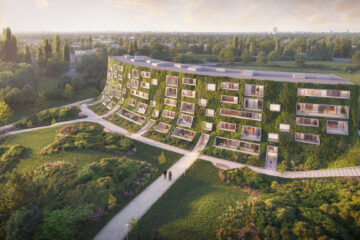The Peace Memorial (Japanese: 原爆ドーム Genbaku Dōmu) is a meaningful structure located in Hiroshima. In fact, it is the ruins of the Hiroshima Prefectural Exhibition Centre preserved as a monument to commemorate the dropping of atomic bombs on Japan during World War II, which resulted in the deaths of more than 400,000 people in total. The monument forms part of the Peace Memorial Park. In 1996, the site was designated a UNESCO World Heritage Site.
The building was designed as an exhibition centre to promote the industry of Hiroshima Prefecture by Czech architect Jan Letzel. It was completed in 1915. The five-storey Art Nouveau edifice with its distinctive 25-metre high dome stood on the banks of the Motoyasu River in a busy business and commercial district. The centre exhibited objects related to industry, the work of artisans from various regions of Japan, as well as works of art.
The building in the 1930s Photo: Hiroshima Peace Museum

on 6 August 1945, at 8:15am, the first atomic bomb to be used in World War II was dropped on Hiroshima. It had the power equivalent to 15,000 tonnes of TNT. Hiroshima was chosen as the target because it was an important port and one of the main headquarters of the Japanese army. The post-bomb explosion took place in the immediate vicinity of the exhibition centre. The hypocentre was about 150 metres away. Almost all buildings within a two-kilometre radius were razed to the ground. The exhibition centre is the only building so close by that was not completely destroyed. As a result of the explosion, most of the walls collapsed and only the iron skeleton remained of the dome. The building’s durability can be attributed to its earthquake-resistant construction; it withstood earthquakes before and after the bombing. The ruined edifice is also often referred to as the Genbaku Dome, the Atomic Bomb Dome or the A-Bomb Dome.

In 1949, Japanese architect Kenzō Tange won a competition to design the Hiroshima Peace Memorial Park, in which the ruins were to play a prominent role. They were preserved in the state they were in after the explosion. The Hiroshima Memorial Museum was built between 1951 and 1955, and the entire project was completed in 1964. In 1966, the Hiroshima city council passed a resolution to preserve the ruins in perpetuity, as a symbol but also a warning to future generations. Preserving the building in a state of permanent ruin required a great deal of money and proper maintenance. A metal frame was installed inside to give the ruin more stability. The first conservation work was carried out in the 1960s, followed by others in the 1990s.
The Hiroshima Prefectural Exhibition Centre in its original state (1928) and today. Photo: http://www.kinouya.com/intro.htm, Public domain, via Wikimedia Commons and lienyuan lee, CC BY 3.0, via Wikimedia Commons
In 1996, the Peace Monument was inscribed on the UNESCO World Heritage List. It was included there as a symbol of resistance against the destructive power of the atomic bomb, the site of the first use of nuclear weapons on a population and as an eloquent symbol of peace.
Source: dive-hiroshima.com, travel-around-japan.com
Also read: Architecture | City | Monument | History | Interesting facts | Japan | Travel

